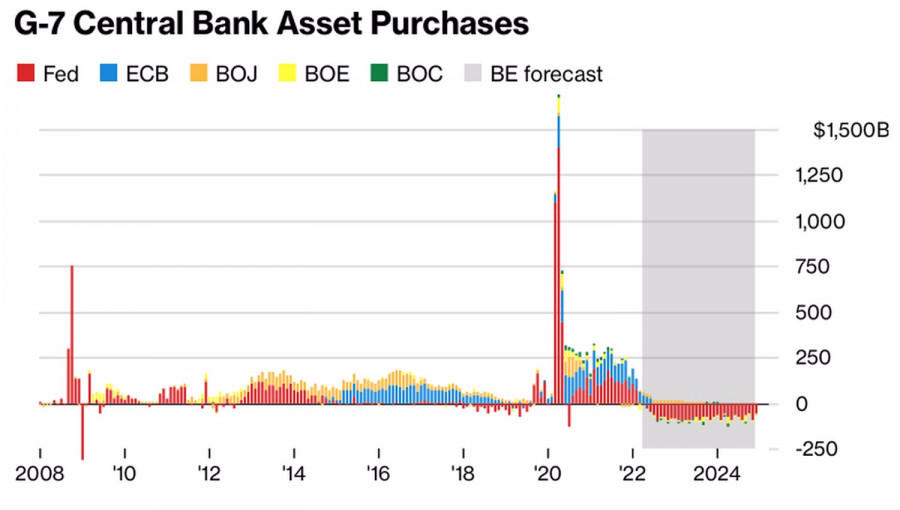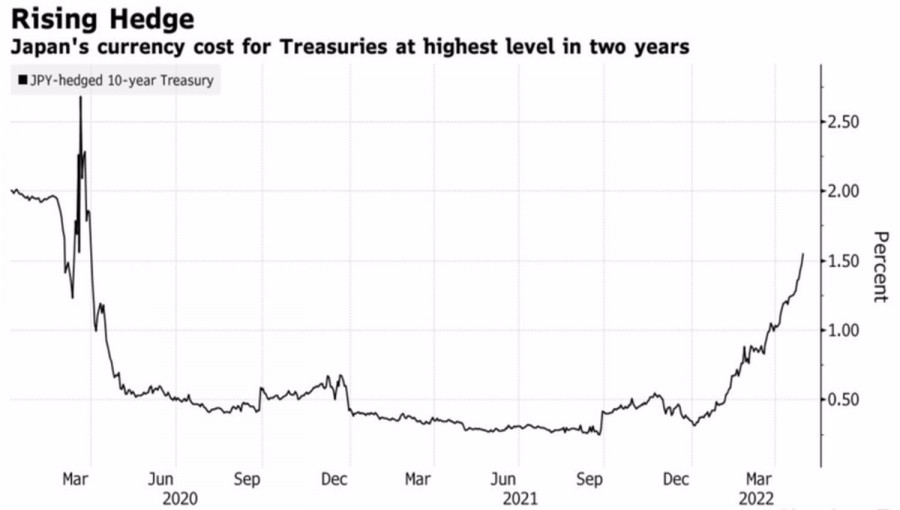
When the economy is tottering in the wind, investors buy up government bonds. On the contrary, when it is strong as a bull, debt securities are sold, and their return on price rises. While the US experienced its biggest rally in Treasury yields in 13 years in April, the eurozone is a different story. Its economy is weak. At the same time, the expansion of the interest rate differential on US and German debts is the main reason for the fall in EURUSD quotes.
Due to its close dependence on Russian oil and gas, the EU is facing a severe energy crisis. If cutting off the gas of Poland and Bulgaria will have little effect on their economies, and if Germany and Italy were in the same role as the victims, the eurozone would certainly face a recession. This circumstance had an impact on the confidence of consumers and companies in the economy of the currency bloc – the indicator fell to its lowest level for the year. This is a strong signal of a slowdown in GDP in the second quarter, which is confirmed by the fall of the index of purchasing managers in the manufacturing sector to a 15-month low. It should be noted that already in January–March there was a recession in Italy, stagnation in France, and the German economy narrowly avoided recession.
On the contrary, US bond rates continue to grow by leaps and bounds, which indicates a strong position of GDP. Soon, the Fed will join the wave of sales, which intends to reduce its nearly $9 trillion balance sheet by $95 billion a month. This is the most aggressive strategy among the world's leading central banks, which creates a tailwind for the US dollar. Bloomberg estimates that G7 regulators will get rid of $410 billion of assets in 2022. The lion's share in this process will belong to the Fed.
Dynamics of balance sheets of central banks

Japanese investors also contributed to the growth in the yield of US Treasury bonds, since the beginning of the year they got rid of $60 billion of securities. Although the amount is insignificant compared to the total reserves of Japan and its residents of $1.3 trillion, nevertheless, it will continue to grow. At least until the yield on 10-year US debt exceeds 3% and stays above it for a long time. The fact is that, as the dollar strengthens, the cost of currency hedging increases against the yen. Considering it, investments in US bonds are not as attractive as before.
Dynamics of foreign exchange hedging costs

Thus, the dynamics of the instruments of the US debt markets and the eurozone countries, led by Germany, clearly show whose economy is stronger and contributes to the fall of the euro against the US dollar in the direction of parity.
In conditions of a downward trend on the daily chart of EURUSD, it makes sense to use pullbacks in the direction of moving averages to form short positions with targets at 1.041 and 1.032. There is a Splash and Shelf pattern on the hourly time frame. At the same time, a breakout of resistance at 1.0575 may be the basis for purchases, and a confident assault of support at 1.051 may be the basis for sales.
EURUSD, Daily chart

EURUSD, Hourly chart